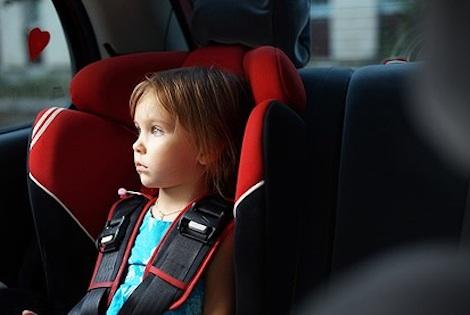Parents are being reminded to check their precious cargo is both safely and correctly buckled up in the right car seat with the launch of a new website to help find the right car seat.
Transport New South Wales claims two in three child car seats are not used properly, putting little passengers at risk every time they are in the car. Children incorrectly secured in a car seat are seven times more likely to sustain life-threatening injuries in a crash than those using car seats secured correctly.
Research shows how effective child car seats are in protecting kids in the event of a car crash, but it’s essential that parents have the right car seat for their child’s age and size before setting off.
Childcarseats.com.au shows car seats that have been scientifically tested for crash safety and ease of use and provides star ratings for each product to help parents and carers pick the best child car seat for their little one’s age and size.
It also has useful tips on how to fit and use child car seats correctly and explains where an Authorised Fitting Station is located.
“Many parents and carers don’t realise the potentially fatal consequences that the incorrect use of a child car seat can have – it actually increases the likelihood of your child being injured or killed in a crash,” said Marg Prendergast, General Manager of the NSW Centre for Road Safety.
“Our mission is to make sure every little person travelling on our roads is as safe as possible,” said Ms Prendergast.
Transport NSW is encouraging parents to get into the habit of regularly checking that their child’s car seat is safely installed and size appropriate, to help significantly reduce the risk of injury.
There are a few things parents need to be aware of when buckling up their children, from making sure the straps aren’t twisted and that they are tight enough, to checking the car seat hasn’t moved out of place during day to day driving, as well as three key questions to be answered.
1. Have you got the right car seat?
2. Have you fitted and adjusted it correctly?
3. Do you know how to check it properly?
There are three common types of child car seats – rear facing car seats, forward facing car seats and booster seats.
Rear facing child car seats (0-12 months) - have an inbuilt harness system and are held in place by a seatbelt and a top tether strap, with the baby facing the rear of the vehicle.
Forward facing child car seats (1-4 years) - are used with an adult lap/sash seatbelt, have a top tether for the harness, and have high backs and sides to provide protection for children in side impact crashes, as well as providing support for when they are sleeping
Booster seats (4+ years) - use the adult lap/sash seatbelt to restrain and lift the child and allow the sash seat belt to sit firmly across the collar bone and chest, with the lap portion fitted to the hips/pelvic bones. Booster seats may also have a device that prevents the child from sliding beneath the lap seat belt in a crash.



















__small.png)










